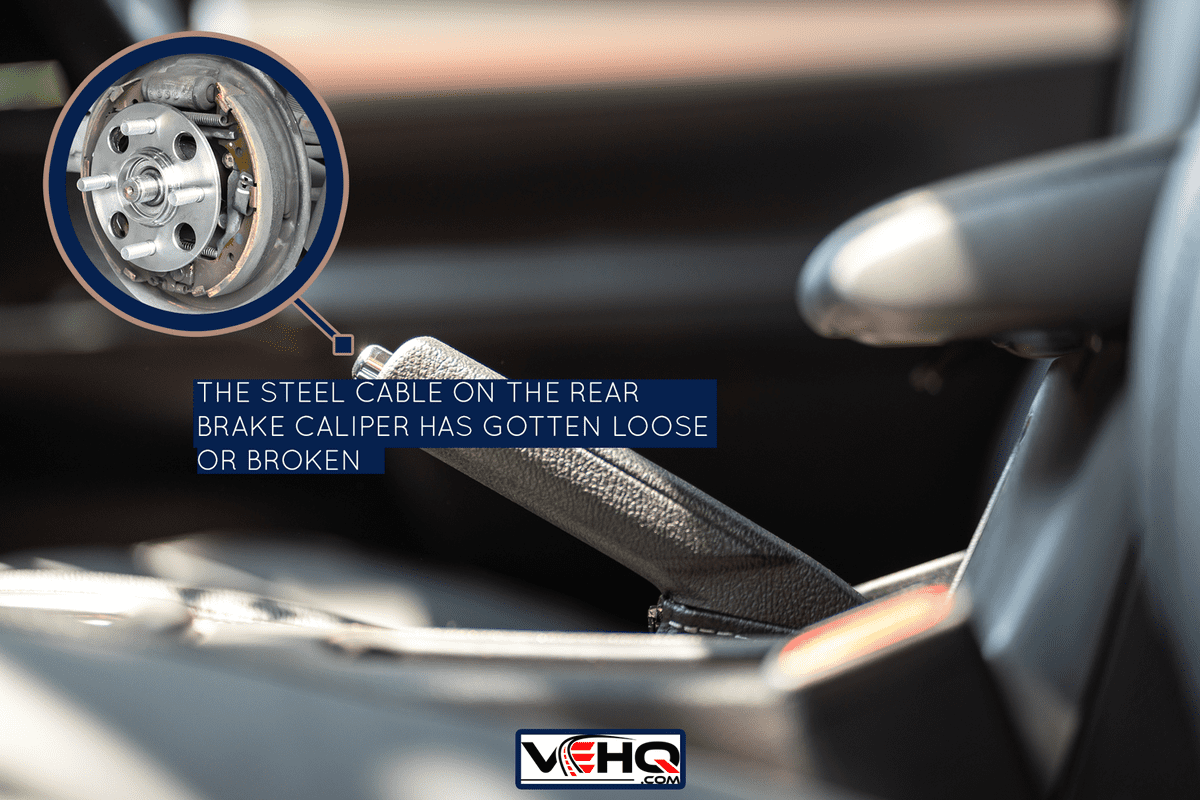Have you ever found yourself in a situation where your emergency brake refused to release, leaving you stranded or holding up traffic? An inoperable emergency brake can be not only frustrating but also potentially dangerous. But fear not, getting your emergency brake back in working order doesn’t have to be a daunting task. In this comprehensive guide, we will explore the reasons behind a stuck emergency brake and provide a step-by-step solution for fixing it, empowering you to handle this common motoring issue with confidence.

Image: automotorpad.com
An emergency brake, also known as a parking brake, is an essential safety feature in every vehicle. Its primary purpose is to keep your car securely in place when parked, preventing unintended movement even on inclined surfaces. The brake is typically activated by pulling up a lever or pushing a pedal, engaging a locking mechanism that immobilizes the rear wheels.
However, like any mechanical component in a car, the emergency brake can sometimes become stuck due to various factors. Prolonged use, exposure to moisture, corrosion, or mechanical damage can compromise its proper functioning. While it’s always advisable to have a qualified mechanic inspect and fix a stuck emergency brake, there are instances where you may want to attempt the repair yourself.
Step 1: Diagnosing the Fault
The initial step in fixing a stuck emergency brake is to correctly identify the source of the problem. Follow these steps to diagnose the issue:
- Ensure that the emergency brake lever or pedal is fully engaged.
- Put the car in drive (for automatic transmission) or first gear (for manual transmission).
- Attempt to move the vehicle forward or backward.
If the vehicle remains stationary, it confirms that the emergency brake is indeed stuck. However, if the car moves, the issue may lie elsewhere in the braking system. It’s crucial to address this underlying problem before proceeding further.
Step 2: Locating the Emergency Brake Cable
Most vehicles have an emergency brake cable that runs from the lever or pedal to the rear wheels. Over time, this cable can corrode, stretch, or seize, rendering the emergency brake ineffective. To locate the emergency brake cable:
- Identify the lever or pedal that activates the emergency brake.
- Follow the cable from the lever or pedal towards the rear of the vehicle.
- The cable will typically be routed under the car’s chassis or within a protective sleeve.
Step 3: Inspecting and Lubricating the Cable
Once you have located the emergency brake cable, thoroughly examine it for any visible signs of damage or corrosion. If the cable appears damaged or excessively rusted, it may need to be replaced. Otherwise, proceed to lubricate the cable:
- Apply a penetrating oil or lubricant spray along the length of the cable.
- Work the cable back and forth by engaging and disengaging the emergency brake several times.
- Repeat the process until the cable moves smoothly without binding or sticking.
In some cases, the emergency brake mechanism itself may be the source of the problem. If lubricating the cable doesn’t resolve the issue, you may need to access and inspect the mechanism located at the rear wheels. This involves removing the rear tire and brake drum to gain access to the brake shoes and the emergency brake components. It’s advisable to consult a repair manual or seek professional assistance for this step.

Image: vehq.com
Step 4: Resetting the Emergency Brake
After addressing the root cause of the stuck emergency brake, it’s crucial to reset the system to ensure it functions correctly. The reset procedure varies among vehicle models, but here’s a general guideline:
- Locate the emergency brake lever or pedal.
- Depress the release button, usually found near the base of the lever or pedal.
- While holding the release button, engage and disengage the emergency brake several times.
- Release the button and check if the emergency brake is now working smoothly.
How To Fix Stuck Emergency Brake
Conclusion
Fixing a stuck emergency brake can be a manageable task with the right knowledge and tools. By following the steps outlined in this comprehensive guide, you can effectively diagnose and resolve this common problem, saving yourself time, money, and the inconvenience of a non-functioning emergency brake. Remember, regular maintenance and timely repairs are essential to ensure your vehicle’s safety features are always in top condition, giving you peace of mind on every journey.